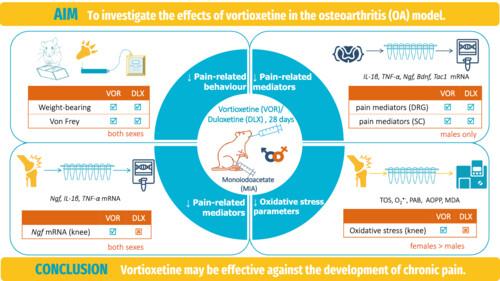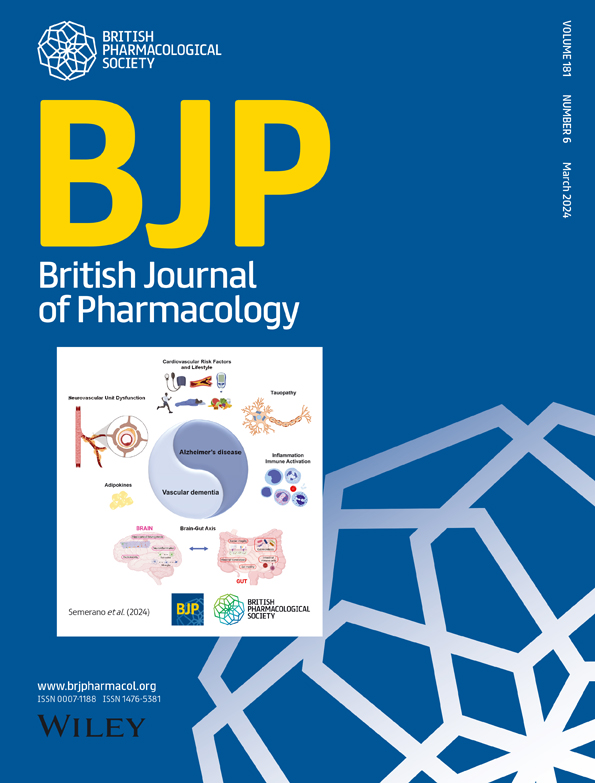Vortioxetine reduces the development of pain-related behaviour in a knee osteoarthritis model in rats: Involvement of nerve growth factor (NGF) down-regulation
Abstract
Background and Purpose
Vortioxetine, a multimodal-acting antidepressant, has recently shown analgesic properties. We aimed to investigate its prophylactic effect in the osteoarthritis (OA) model and gain insights into the underlying molecular mechanisms. Duloxetine was studied as a reference.
Experimental Approach
In the monoiodoacetate (MIA)-induced rat model of knee OA, pain-related behaviour was assessed in weight-bearing and Von Frey tests. Antidepressants were administered orally once daily for 28 days. Gene expression of pain-related mediators (Ngf, Il-1β, Tnf-α, Bdnf, and Tac1 encoding substance P) and oxidative stress parameters were determined after completion of the treatment/behavioural testing protocol.
Key Results
Vortioxetine and duloxetine dose dependently reduced weight-bearing asymmetry and mechanical hyperalgesia of the paw ipsilateral to the MIA-injected knee. Vortioxetine reduced the increased Ngf mRNA expression in the MIA-injected knees to the level in sham-injected counterparts. It reduced oxidative stress parameters in the affected knees, more effectively in females than males. Duloxetine showed no effect on Ngf mRNA expression and oxidative stress. Both antidepressants decreased mRNA expression of pain-related mediators in the lumbar L3–L5 ipsilateral DRGs and spinal cords, which were up-regulated in MIA-injected rats. This effect was male-specific.
Conclusion and Implications
Vortioxetine may be effective against the development of chronic pain in OA. Its antihyperalgesic effect may be mediated, at least in part, by normalization of NGF expression in the affected joint. Decrease of localized oxidative stress and of expression of pain-related mediators that contribute to central sensitization are also involved in vortioxetine's antihyperalgesic effect, in a sex-specific pattern.



 求助内容:
求助内容: 应助结果提醒方式:
应助结果提醒方式:


